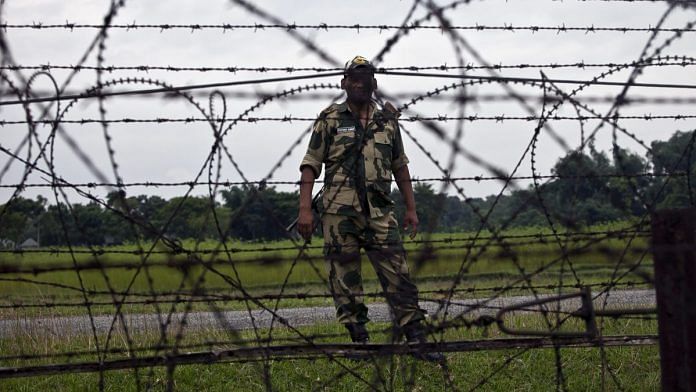Thank you dear subscribers, we are overwhelmed with your response.
Your Turn is a unique section from ThePrint featuring points of view from its subscribers. If you are a subscriber, have a point of view, please send it to us. If not, do subscribe here: https://theprint.in/subscribe/
With India’s independence, there have been many conflicts, but the one in the former princely state of Jammu and Kashmir has garnered the greatest attention from academics, journalists, and writers. “Kashmir at the Crossroads: Inside a 21st Century Conflict,” written by Sumantra Bose, is a recent contribution to the extensive bibliography on Kashmir. In the realm of academia, Sumantra Bose is no stranger. In addition to teaching international and comparative politics at the London School of Economics, he is the grandson of Netaji Subhas Chandra Bose.
The chronological order divides the book into five sections. The first section, entitled The Dispute, provides a description of the struggle from 1947 to 1989. The Carnage, which follows, documents the rebellion until 2004, as well as the horrific state retribution. The Stone Pelters is a part that spans from 2005 to 2019. According
to the author, the struggle has entered a new phase starting in 2019, which is highlighted in this book by a chapter on The Hindu Nationalist Offensive.
Bose’s work is most notable for its examination of the recent past, following the sudden liquidation of the state of Jammu and Kashmir on August 5, 2019. It is apparent that the Hindu nationalist government’s burial of the skeleton of Article 370 in Delhi had little significance. The abolition of J&K’s statehood as well as the repeal of Article 35A, which provided certain protections to all permanent residents of Kashmir, Jammu, and Ladakh, and the unilateral redrawing of the map, which divided the state into two union territories, marked a new chapter in the Kashmir dispute’s history. Amidst the opposing countries’ territorial claims, the different peoples of Jammu and Kashmir, particularly those living in the Kashmir Valley, have endured severe hardships for many generations. But their political ambitions make them more than just innocent bystanders—they are also complicit in the tragedy.
The Indian populace would be more receptive to Modi and Shah’s strategy, according to Bose, if they could only hope that Pakistan would react with extreme hysteria to their new, iron-fisted Kashmir policy. “It is almost as certain,” he continues in a later section, “that the strongman duo in New Delhi did not anticipate the nature and severity of China’s response.” The Chinese foreign ministry criticised the step for unilaterally altering the status quo and escalating tensions in a statement released on August 6, 2019, one day after the decision to separate Ladakh from J&K. India has persistently eroded China’s territorial sovereignty by enacting unilateral changes to its domestic laws (pertaining to J&K). This cannot be tolerated,” the Chinese statement had declared.
Writing about contentious issues like this one might lead authors to fervently support or oppose one side in the conflict. Bose, drawing inspiration from the Good Friday Agreement in Northern Ireland, promotes reconciliation between “equally legitimate political aspirations,” mainly avoiding that trap. A bold, fair, and honest book about a sensitive subject whose realities have been concealed from the public behind decades of deception is the product of this comparatively unbiased approach.
Reading Kashmir at the Crossroads is sombre, distressing, scary, and eventually enlightening. All things considered, this is a piece of strong, fearless research laced with the author’s own memories from his or her decades of involvement with the region and the topic. It’s praiseworthy for what it isn’t as much as for what it is.
These pieces are being published as they have been received – they have not been edited/fact-checked by ThePrint.


